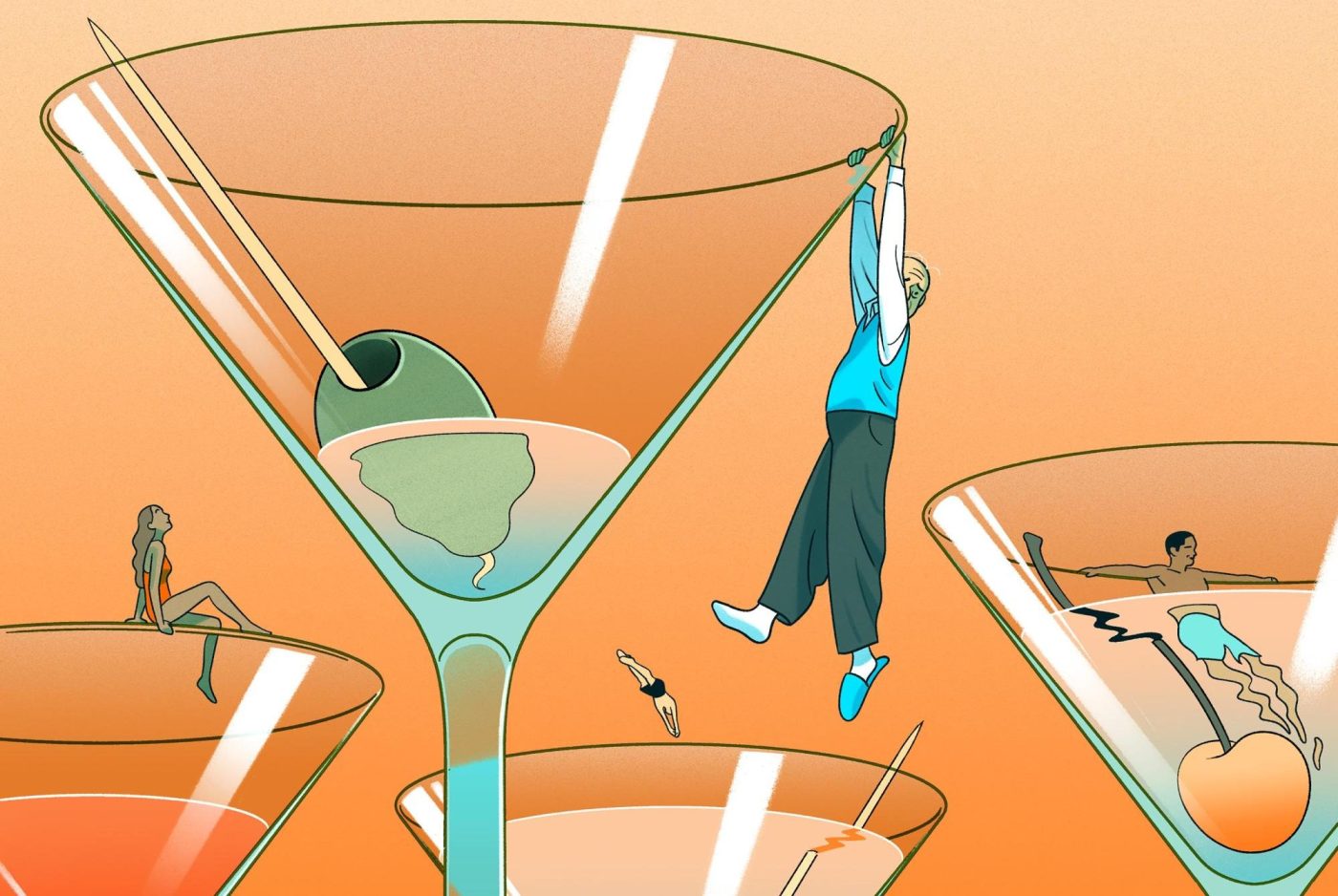
The blockbuster drugs designed to control diabetes — now also widely used to help overweight people shed pounds — show great promise for tackling other prickly health problems: treating alcoholism, and perhaps smoking and other substance use disorders as well.
Related Articles
Early results show Prop 36 struggling with ‘mass treatment’ pledge for homeless drug offenders
Opinion: I overcame homelessness, addiction. Now I help others make the journey
Serious liver disease is up among heavy drinkers, even without more drinking
President Trump’s executive order on homelessness echoes Gov. Newsom’s a year before
After hopeful decline, drug deaths are rising in these Bay Area counties
This is a potential game-changer. While overdose deaths from fentanyl and its sinister cousins have seized the spotlight for years — some 80,000 Americans died from drug overdoses in 2024 — alcohol-related diseases kill more than twice as many, at about 178,000 every year, according to the U.S. Centers for Disease Control and National Institute on Alcohol Abuse and Alcoholism.
Not to put too fine a point on it, but the drug that kills more Americans than any other is available legally at the grocery store every day of the week. So the usefulness of a more effective medical intervention is clear, and perhaps at hand.
Drs. Bianca Robertson and Jonathan Vargas, addiction medicine specialists from UCLA, summarized the latest research on GLP-1 and related drugs for their brethren at the California Society of Addiction Medicine’s annual conference in Garden Grove on Friday, Aug. 15.
It’s a hot topic and an exciting time of discovery, with many more studies to come, they said. Consider:
A study of 153 adults with a body mass index of 30 or higher (obese), who were also current alcohol drinkers and used a GLP-1 drug for at least 30 days, found significant reductions in self-reported alcohol intake as well as in the number of drinks per drinking episode. There were also drops in binge drinking, lower scores on alcohol use disorder tests, and reductions in both the stimulating and sedative effects of alcohol.
Ozempic (Photo illustration by Mario Tama/Getty Images)
A large, 17-year observational study in Sweden showed that among problem drinkers with both obesity and Type 2 diabetes, GLP-1 drugs “substantially decreased the risk for hospitalizations related to alcohol use disorder.”
A recently-published clinical trial tracked 48 adults with alcohol use disorder who took relatively low doses of semaglutide (the key ingredient in Ozempic) once a week for nine weeks. Semaglutide significantly reduced alcohol consumption, and participants reported fewer drinks per day and reduced craving. In a subgroup who smoked, there was a significant reduction in the consumption of cigarettes per day as well.
A social media analysis screened more than 68,000 Reddit posts related to GLP-1 drugs. Of those, there were 1,580 related to alcohol. And of those, 71% reported reduced alcohol cravings and decreased desire to drink.
Investigations involving our fuzzy, four-legged friends have shown much the same.
Rodent studies have found that semaglutide reduced alcohol intake, binge drinking and relapse. In rats self-administering fentanyl, a single dose of liraglutide, another GLP-1 drug, reduced fentanyl seeking with an efficacy that matched buprenorphine — the FDA-approved drug currently considered the gold standard in treating opioid addiction.
There’s some suggestion that the drugs might work for stimulant use disorders as well, and Robertson’s eyes lit up with the promise all of that suggests.
How does it all work? That’s not well understood just yet. It likely involves modulation of reward pathways in the central nervous system, and perhaps another mechanism: the slowed emptying of the gut that GLP-1 drugs impose (and the increased feeling of fullness from same). That could reduce alcohol consumption, as well as blunt the rise in blood alcohol content, the researchers said.
In addition to semaglutide, other GLP-1 formulations available in the U.S. include exenatide, liraglutide, lixisenatide, dulaglutide and tirzepatide. All are FDA approved for glycemic control in adults with Type 2 diabetes.
Drs. Bianca Robertson and Jonathan Vargas, addiction medicine fellows at UCLA
Over the past decade, 10 new diabetes drugs have been approved by the FDA, Vargas said. Over the past 74 years, only three drugs have been approved for alcohol use disorder.
There’s much more investigation to be done, but great promise on the horizon, Robertson and Vargas said.
Medical management — that is, therapy that involves the use of drugs, not just talk — is the most effective approach to addiction, myriad studies have found. But only slightly more than half of treatment facilities in California offer any kind of medication-assisted treatment, according to data from the Substance Abuse and Mental Health Services Administration.
A tragic gap exists between science and practice, between many physicians and behavioral treatment centers. Addiction treatment remains too separate from mainstream medicine, and an anti-medicine, “pull-yourself-up-by-your-bootstraps” mentality remains strong. That gap is narrowing, ever so slowly; perhaps breakthroughs on the horizon, and better policy, will get help to more people who need it. In the end, it’s about one thing only: saving lives.